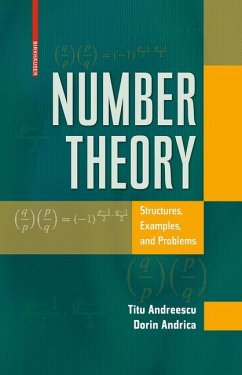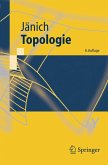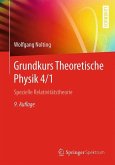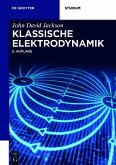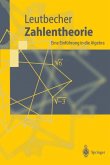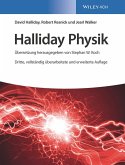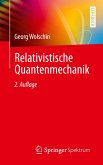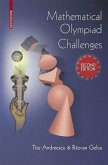Number theory, an ongoing rich area of mathematical exploration, is noted for its theoretical depth, with connections and applications to other fields from representation theory, to physics, cryptography, and more. While the forefront of number theory is replete with sophisticated and famous open problems, at its foundation are basic, elementary ideas that can stimulate and challenge beginning students. This lively introductory text focuses on a problem-solving approach to the subject.
Key features of Number Theory: Structures, Examples, and Problems:
_ A rigorous exposition starts with the natural numbers and the basics.
_ Important concepts are presented with an example, which may also emphasize an application. The exposition moves systematically and intuitively to uncover deeper properties.
_ Topics include divisibility, unique factorization, modular arithmetic and the Chinese Remainder Theorem, Diophantine equations, quadratic residues, binomial coefficients, Fermat and Mersenne primes and other special numbers, and special sequences. Sections on mathematical induction and the pigeonhole principle, as well as a discussion of other number systems are covered.
_ Unique exercises reinforce and motivate the reader, with selected solutions to some of the problems.
_ Glossary, bibliography, and comprehensive index round out the text.
Written by distinguished research mathematicians and renowned teachers, this text is a clear, accessible introduction to the subject and a source of fascinating problems and puzzles, from advanced high school students to undergraduates, their instructors, and general readers at all levels.
Key features of Number Theory: Structures, Examples, and Problems:
_ A rigorous exposition starts with the natural numbers and the basics.
_ Important concepts are presented with an example, which may also emphasize an application. The exposition moves systematically and intuitively to uncover deeper properties.
_ Topics include divisibility, unique factorization, modular arithmetic and the Chinese Remainder Theorem, Diophantine equations, quadratic residues, binomial coefficients, Fermat and Mersenne primes and other special numbers, and special sequences. Sections on mathematical induction and the pigeonhole principle, as well as a discussion of other number systems are covered.
_ Unique exercises reinforce and motivate the reader, with selected solutions to some of the problems.
_ Glossary, bibliography, and comprehensive index round out the text.
Written by distinguished research mathematicians and renowned teachers, this text is a clear, accessible introduction to the subject and a source of fascinating problems and puzzles, from advanced high school students to undergraduates, their instructors, and general readers at all levels.
From the reviews:
"Number theory is a very important field in mathematics, with many applications in theoretical physics, cryptography and so on. The present book of problems with solutions is a wonderful selection of the basic ideas in this field. ... Both authors are outstanding specialists in this field ... . This textbook contains eleven chapters with problems and solutions. ... This material is very useful for high school students, undergraduate and graduate students, teachers and all lovers of mathematics." (Carnelia Bejan, IASI Polytechnic Magazine, Vol. 22 (1/4), March-December, 2010)
"This is a collection of elementary number theory problems taken mainly from mathematical olympiads and other contests held in different countries, mainly in recent years. ... This makes the book a useful source of material for tests, homeworks, projects, and classroom discussion. ... The book is a welcome addition to the library of Problem Books, and will undoubtedly provevaluable to coaches and teams involved in mathematical competitions as well as to university instructors and students." (Mowaffaq Hajja, Zentralblatt MATH, Vol. 1182, 2010)
"The book is a collection of number theory problems chosen from various national and international Mathematical Olympiads. ... Each chapter of this book starts a brief ... review of concepts, with various solved examples, mainly selected from Olympiad exams. ... The book could be used as a text for undergraduates ... . The main audience will consist of Olympiad-level students ... . I recommend this friendly volume for students looking for challenging problems in number theory and teachers of number theory for undergraduates ... ." (Mehdi Hassani, The Mathematical Association of America, June, 2009)
"Number theory is a very important field in mathematics, with many applications in theoretical physics, cryptography and so on. The present book of problems with solutions is a wonderful selection of the basic ideas in this field. ... Both authors are outstanding specialists in this field ... . This textbook contains eleven chapters with problems and solutions. ... This material is very useful for high school students, undergraduate and graduate students, teachers and all lovers of mathematics." (Carnelia Bejan, IASI Polytechnic Magazine, Vol. 22 (1/4), March-December, 2010)
"This is a collection of elementary number theory problems taken mainly from mathematical olympiads and other contests held in different countries, mainly in recent years. ... This makes the book a useful source of material for tests, homeworks, projects, and classroom discussion. ... The book is a welcome addition to the library of Problem Books, and will undoubtedly provevaluable to coaches and teams involved in mathematical competitions as well as to university instructors and students." (Mowaffaq Hajja, Zentralblatt MATH, Vol. 1182, 2010)
"The book is a collection of number theory problems chosen from various national and international Mathematical Olympiads. ... Each chapter of this book starts a brief ... review of concepts, with various solved examples, mainly selected from Olympiad exams. ... The book could be used as a text for undergraduates ... . The main audience will consist of Olympiad-level students ... . I recommend this friendly volume for students looking for challenging problems in number theory and teachers of number theory for undergraduates ... ." (Mehdi Hassani, The Mathematical Association of America, June, 2009)

